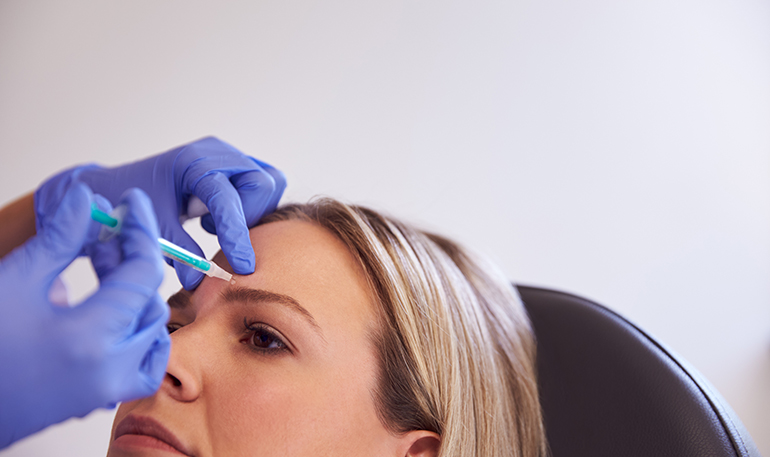Botoks

Botoks
Botoks yüz gençleştirme uygulamalarında uzun yıllardır uygulanan en güvenilir yöntemlerin başında geliyor. İlk keşfinden sonra şaşılık, tikler, spastik hastalıkların tedavisi için kullanılan botoks FDA onayını almasının ardından estetik uygulamalar için kullanımında patlama yaşanmış ve çok popüler hale gelmiştir. Bunda botoksun ameliyat gerektirmeden kısa sürede uygulanması, kırışıklıklar üzerinde kısa sürede oldukça iyi sonuçlar vermesi, yan etkilerinin çok nadir olması etkili olmuştur. Botoks uygulaması estetik uygulamalar içinde hasta memnuniyeti en yüksek olan ve en sık yapılan işlemlerdendir. Bunlara rağmen botoks için çok sayıda doğru bilinen yanlış bilgi vardır. Botoks uygun dozlarda doğru noktalara uygulandığında mimik kasları çalışmaya devam eder. Yüzde doğallık dışı donuk ifade oluşmaz. Yakınlarınız iyi göründüğünüzü fark ederler ama estetik bir operasyon yapıldığını farketmezler. Doğal sonuçlara ulaşabilmek için her yüz farklı değerlendirilmelidir. çünkü her yüzde kasların yerleşimleri, uzunlukları, güçleri, kaşların pozisyonları, deri yapısı ve en önemlisi kişilerin kullandıkları mimikler farklılık gösterir. Buna bağlı olarak kırışıklıkların yeri ve derinlikleri de farklıdır. Tedavide bu farklılıklar göz önüne alınarak kişiye özel dozlarda ve sadece ihtiyaç olan alanlara botoks uygulamasını yapmak çok daha etkili olur. Uygulamadan 7-10 gün sonrasında kontrol muayenesi yaparak botoksun etkisini değerlendirmek, gerekli olursa küçük miktarlarda ek dozlar yapmak sonucu optimize eder. Botoks hiç kırışıklıklar oluşmadan da yapılabilir. Son dönemde oldukça popüler olan bu yöntem önleyici botoks olarak anılıyor. Mimikleri etkilemeden genellikle 20 li yaşlarda uygulanan bu yöntemle hem kırışıklıklar oluşmadan engellenmiş olur hem de göz çevresi daha enerjik görünür.Migren Tedavisinde Botoks
Bazı migren tiplerinin oluşumunda sinirlerin kas içinden geçerken kasların güçlü kasılmasıyla sıkışması ve migren tipi baş ağrısına bu sinirlerdeki sıkışmanın neden olduğu düşünülmektedir. Ayrıntılı bir muayene ve baş ağrısı özelliklerinin sorgulanması sonrasında tetik noktalarına yapılan botoks enjeksiyonu migren ağrılarında azalma sağlar. Botoks sonrası ağrı kesici kullanma sıklığı azalır, atakların şiddetini ve sıklığını azaltıcı etkileri vardır. Migrenin botoksla tedavisinde en önemli nokta ağrının başladığı tetik noktaların iyi belirlenmesi ve yapılacak dozun ayarlanmasıdır. Gebe ve emziren kadınlarda yeterli bilimsel veriler olmadığı için önerilmez. Myastenia gravis gibi kas hastalığı olanlara, bazı kas gevşetici ve antibiyotik ilaçları kullanan hastalarda kullanılmamalıdır.Terleme Tedavisinde Botoks
Özellikle yaz ayları öncesinde çok sık tercih edilen bir uygulamadır. sıcak günlerde terleme sonucu giysilerin koltuk altı kısmında oluşan ıslaklık görüntüsü oldukça rahatsız edicidir. antiperspirantlar her zaman istediğimiz tam etkiyi göstermeyebilir. Terleyen bölgelere (koltuk altı, eller veya ayak) 10 dk da yapılacak botoks uygulamasıyla 6 ay süreyle terleme probleminden kurtulabilirsiniz.Aşırı Gülüş (Gummy Smile) Tedavisinde Botoks
Normal duruşta önden bakıldığında üst dişlerin alt kısımlarının 2 mm kadar görünmesi estetik olarak güzel kabul edilir. Gülüş esnasında üst diş etlerinin görünmesi aşırı gülüş (gummy smile ) olarak adlandırılır. Gülüş esnasında dudakları yukarı çeken kasların aşırı güçlü olmasına bağlı ortaya çıkabilen bu problem mimik kaslarına botoks yapılarak giderilebilir. Gummy smile problemi olan hastalar gülmekten kaçınabilir, gülerken ağızlarını elleriyle kapatma gereği duyabilir. bu problemi yaşayan kişiler genellikle normal duruşta da diş mineleri daha fazla göründüğü için alt dudağı kasarak dişleri kapatma ihtiyacı duyarlarlar. Alt dudağı yukarı kaldıran kasların aşırı kasılmasıyla çene de olduğundan farklı görünüp yüz orantısını etkileyebilir.Sık Sorulan Sorular
Botoks nedir, nasıl etki eder?
Botoks laboratuvar şartlarında saflaştırılmış bir bakteri toksinidir. Kas kasılmasını sağlayan sinir uçlarına geçici olarak bağlanarak kasılma gücünü zayıflatır.
Botoks etkisi ne zaman başlar, ne kadar sürer?
Uygulama sonrası 2-3 gün içinde etkisi hafifçe başlar 5-7 günde tam etkisi görülür. Genellikle bu etki 3 ay devam eder ve daha sonra yavaş yavaş azalmaya başlar.
Botoksun etkisi 4-6 ay civarındadır. Etki süresi kişiden kişiye değişiklik gösterebilir. Yaş ve uygulanan bölge de etki süresini değiştirebilir.
Botoksu kimler uygulayabilir?
Botoks doğru uygulandığında yan etkisi yok denecek kadar azdır. Doğru uygulama için yüz mimik kaslarının yerleşimini, damar, sinir yapılarının 3 boyutlu anatomisini bilmek son derece önemlidir. Bu yüzden botoks yüz anatomisine hakim tecrübeli ve deneyimli hekimler tarafından yapılmalıdır.
Yüz estetiğinde uygulama alanları nelerdir?
Alın, kaş arası, göz çevresi, burun kenarları, ağız çevresi kırışıklıkları, boyun derisindeki bantlar ve kırışıklıklar mimik kaslarının kasılması sonucu oluşur. Göz çevresindeki kırışıklıkların artması, kaşın hafif aşağıda olması yorgun bir ifadeye neden olur. kaş arası ve burun kenarı kırışıklıkları kızgın ifade yaratırken, ağız çevresindeki ince kırışıklıklar yüzü üzgün gösterebilir. Botoks uygulamasıyla mimik kasları zayıflatılarak yüzün doğal ifadesini bozmadan daha genç, enerjik ve estetik bir görünüm sağlanabilir.
İşlem ne kadar sürer? Ağrı olur mu?
Botoks işlemi ortalama 10 dk sürer. İşlem öncesi isteğe bağlı olarak cilt üzerine uyuşturucu krem uygulanabilir. Çok ince uçlu iğneler yardımıyla enjeksiyonlar yapılır. botoks işleminde rahatsız edici bir ağrı oluşmaz hafif bir yanma hissi olur. İşlem sonrası hemen günlük hayata dönebilirsiniz. Uygulamadan hemen sonra bile dışarıdan fark edilen anormal bir görüntü oluşmaz, bir morluk ve şişlik beklenmez.
Botoks yılan zehiri mi?
Tabi ki hayır. botoks laboratuvar şartlarında saflaştırılmış bir bakteri toksinidir. Kaslara geçici olarak bağlanarak kas kuvvetini zayıflatır. etkisi geçtiği zaman kas normal aktivitesine geri döner.